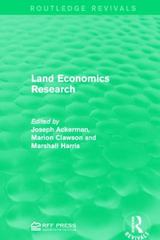Question
Two firms compete in a homogeneous product market where the inverse demand function is P = 20 -5Q (quantity is measured in millions). Firm 1
Two firms compete in a homogeneous product market where the inverse demand function is P = 20 -5Q (quantity is measured in millions). Firm 1 has been in business for one year, while Firm 2 just recently entered the market. Each firm has a legal obligation to pay one year's rent of $1.2 million regardless of its production decision. Firm 1's marginal cost is $2, and Firm 2's marginal cost is $10. The current market price is $15 and was set optimally last year when Firm 1 was the only firm in the market. At present, each firm has a 50 percent share of the market.
a. Based on the information above, what is the likely reason that Firm 1's marginal cost is lower than Firm 2's marginal cost?
Learning curve effects
Second-mover advantage
Limit pricing
Direct network externality
b. Determine the current profits of the two firms. Instruction: Round all answers to the nearest penny (two decimal places).
Firm 1's profits: $ ___________ million
Firm 2's profits: $_____________ million
c. What would each firm's current profits be if Firm 1 reduced its price to $10 while Firm 2 continued to charge $15? Instruction: Round all answers to the nearest penny (two decimal places).
Firm 1's profits: $___________ million
Firm 2's profits: $___________ million
d. Suppose that, by cutting its price to $10, Firm 1 is able to drive Firm 2 completely out the market. After Firm 2 exits the market, does Firm 1 have an incentive to raise it's price?
Yes or No
e. Is Firm 1 engaging in predatory pricing when it cuts it's price from $15 to $10?
Yes or No
Step by Step Solution
There are 3 Steps involved in it
Step: 1

Get Instant Access to Expert-Tailored Solutions
See step-by-step solutions with expert insights and AI powered tools for academic success
Step: 2

Step: 3

Ace Your Homework with AI
Get the answers you need in no time with our AI-driven, step-by-step assistance
Get Started


